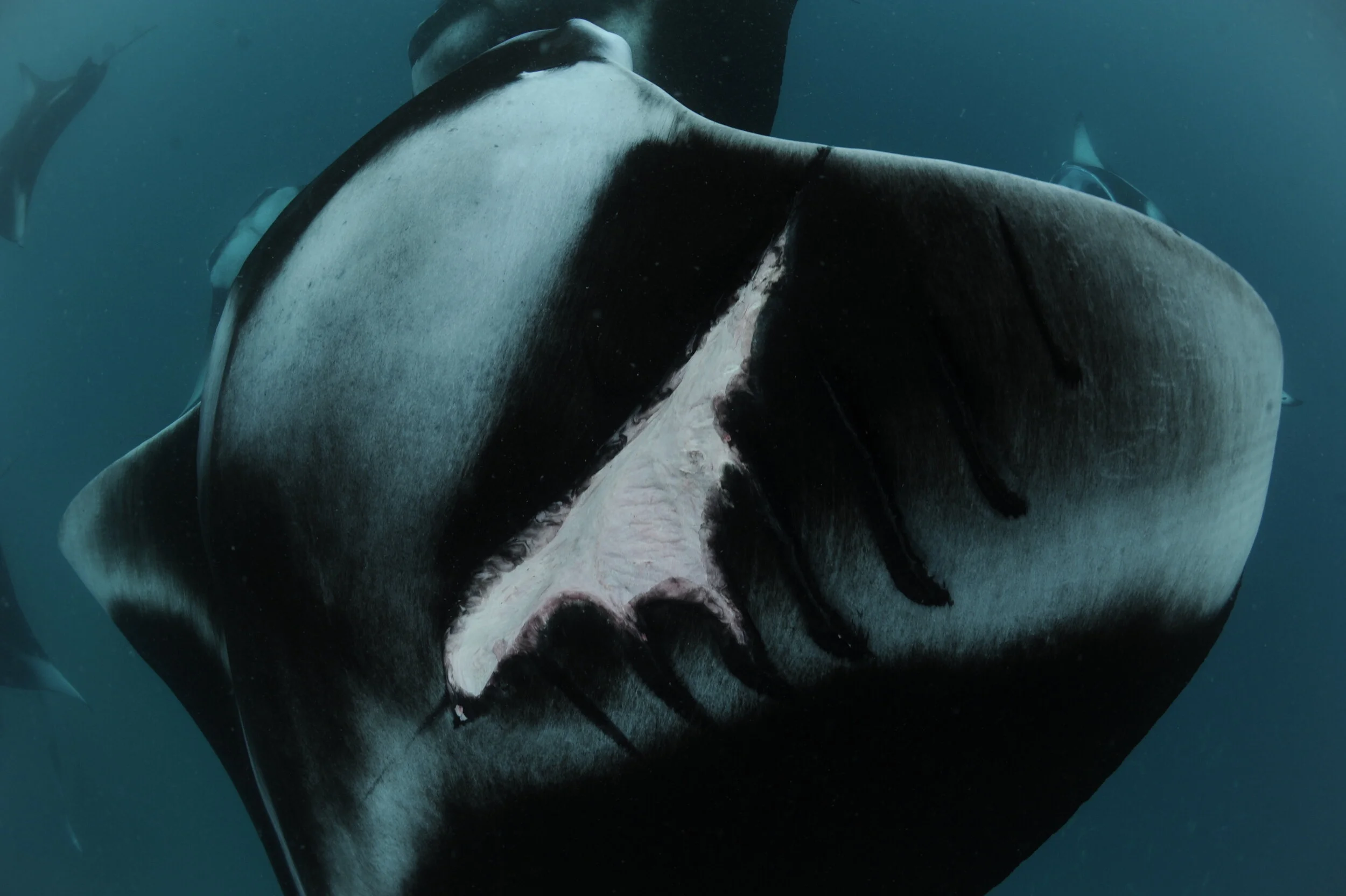
UNSUSTAINABLE TOURISM
There are few experiences more exciting than diving or snorkelling with manta and devil rays. This global love of coming face-to-face with these often-giant rays has fuelled a growing dive and snorkel tourism industry in many countries around the world. In the Maldives alone, manta ray tourism generates tens of millions of US dollars annually for the local economy. However, as you watch these fascinating animals it is important to keep in mind that these rays are sensitive to disturbance. Unmanaged human interactions with manta and devil rays will lead to negative impacts on the local populations as the number of these interactions increase.
Overcrowding of cleaning station and feeding sites with poor in-water human behaviour (e.g. excessive splashing and screaming, touching the manta rays, sitting on or swimming over the cleaning station, and swimming directly in front of the mantas) ruins the experience for other tourists, and can also scare the rays away, ending the encounter for everyone.
To make sure that the most effective regulations are implemented globally, the Manta Trust has taken a systematic approach to addressing this need by developing a Best Practice Code of Conduct based on long-term scientific studies and information pooled from previous guidelines. This multilingual media toolkit is freely available to all tourists and operators here:

BOAT STRIKES
Traditional and modern ‘dhoni’ boats in the Maldives.
As tourism and human development increases around coastal regions globally, researchers have recorded an increase in boat traffic, and unfortunately, an increase in boat strikes on marine animals with it.
In the Maldives, the traditional ‘dhoni’ boat has been superseded by speedboats which can get tourists and locals from point A to point B much faster. However, our Maldives Manta Conservation Programme has noted a subsequent increase in the number of manta rays with propeller boat strike injuries. Unable to avoid the faster-moving speedboats, the manta rays are struck by the boat hull and propeller blades. Injuries vary in severity, with the worst recorded injury to date (of a manta ray which survived the collision) being Babaganoush (MV-MA-0033).
The Manta Trust advocates for implementing speed restrictions in areas of importance for marine animals. This is particularly pertinent to areas where large surface feeding animals like whale sharks and manta rays aggregate near the surface and are highly vulnerable to boat strikes.
Babaganoush (MV-MA-0033) was hit by a speedboat back in 2018 resulting in one of the worst injuries we have witnessed. Read more about him here.
Image Credit: Maldives Whale Shark Research Programme
Image Credit: Maldives Whale Shark Research Programme

MOORING LINE ENTANGLEMENT
Boat mooring and buoy lines have been widely used in the Maldives and around the world for decades. However, as the number of these lines greatly increases throughout coastal regions due to tourism development, they are increasingly posing a serious threat to the reef manta ray population. Manta rays are obligate ram ventilators, meaning that they need to swim constantly to breathe. Therefore, entanglement in a mooring line by a manta ray quickly leads to asphyxiation and death. Unfortunately, manta rays cannot swim backwards, and they often cannot see a thin mooring line directly in front of them as they swim forward. Entanglements can easily occur, and mitigation measures are therefore required to address this growing threat.
Therefore, to safeguard these vulnerable and nationally protected species, all mooring and buoy lines in manta ray aggregation areas must be modified to reduce the risk of manta ray entanglements. To aid these efforts, the Manta Trust has developed a few simple actions which can be taken to help prevent manta ray entanglements.









